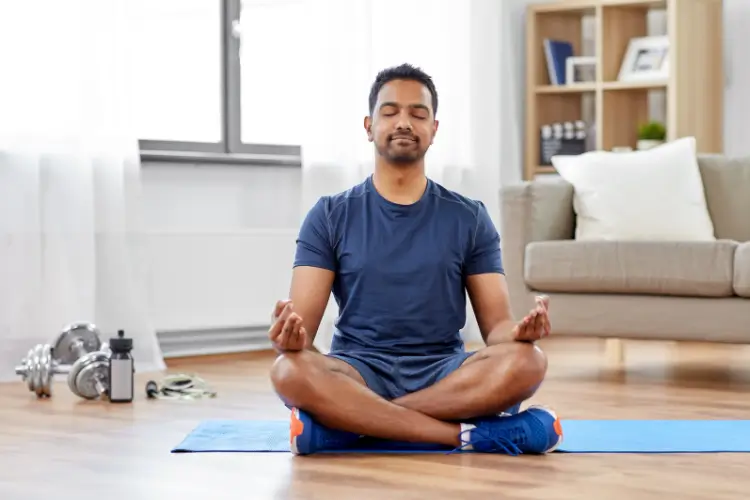The body becoming prepared for vigorous activity determines both performance improvement and reduced chance of harm. Correct conditioning gets joints, muscles, and cardiovascular systems ready for the rigors of activity. Five practical techniques to help the body get ready for physical exercise are described on this page. Following these rules helps people to increase their degree of fitness and lead a more active life.
Beginning with a Thorough Warm-up
Preparation of the body for physical exercise depends on a thorough warm-up. Warm-up raises heart rate improves flexibility, and blood supply to the muscles. Dynamic stretches and modest cardiovascular activities comprise a well-organized warm-up. Dynamic stretches—which vary from leg swings to arm circles to torso twists—involve moving portions of the body through their whole range of motion. These motions assist in engaging the muscles and joints required throughout the exercise. Jogging in place or jumping jacks are light aerobic activities that increase heart rate even more and prepare the cardiovascular system for more demanding action. Schedule a warm up that should last between five to ten minutes before going into any type of physical exercise. This getting ready will greatly increase performance and lower the possibility of strains or injuries.
Use Strength Training
Building muscle and improving general physical performance needs strength training included in a conditioning program. Important for many physical tasks, muscular endurance, power, and stability are enhanced by strength training. Emphasize the legs, back, chest, and core, among other important muscle groups. Effective exercises include deadlifts, lunges, push-ups, and squats. At least two to three times a week, try to do strength training exercises, leaving enough time for recovery between sessions. In order to continue to work-up the muscles, steadily increase the load typically incorporated into workouts. Building strength and training the body for increasingly demanding physical activity depends on this gradual stress. Using nitric oxide supplement can help you strengthen your core. Furthermore helpful for people just starting strength training are bodyweight workouts.
Give Cardiovascular Conditioning Priority
Increasing endurance and general fitness calls for cardiovascular conditioning. Swimming, cycling, running, or fast walking may significantly improve stamina and condition a heart. If you can, at least one hour per week of “vigorous-intensity” activities is advised, or two and half hours in moderate-intensity exercises is recommended. Here, the program should require the use of a range of interval and steady state cardio. Whereas interval training has a deceleration and acceleration function, steady state cardio maintains a fixed rate. Together, this mix may raise general fitness levels and enhance cardiovascular efficiency. Keeping an eye on heart rate during aerobic exercise will assist in guaranteeing that the body is operating in the suitable range for conditioning.
Stressing Mobility and Flexibility
Conditioning the body for physical exercise depends on stressing flexibility and mobility. Greater flexibility increases the range of motion in joints, therefore improving performance and lowering the injury risk. Add mobility drills and static stretching to the program. Exercises include hip circles and shoulder dislocates assist in increasing joint function and movement patterns. Using a mobility app can help track progress and provide guided exercises to ensure consistency. At least two to three times a week, preferably after workouts when muscles are warm, try to include flexibility and mobility exercises. This exercise may improve general physical performance and support a more balanced program of conditioning.
Allow for Adequate Recovery
Conditioning the body for physical exercise depends mostly on allowing enough recuperation. Recovery helps muscles heal and become stronger, therefore lowering their chance of overuse problems. Plan rest days in the training calendar so the body may heal completely. On rest days, equally helpful is active recovery—light walking or easy yoga. Furthermore, give eating and sleep a top priority as both are very important for recovery. Each night try to get 7 to 9 hours of excellent sleep to help muscles recuperate and general health is supported. Eating a balanced diet high in carbs, good fats, and protein will provide the nutrients needed for healing. Giving recuperation top priority helps people to increase their conditioning efforts and performance generally.
Conclusion
Conditioning the body for physical activity calls for a comprehensive strategy, including warm-ups, weight training, cardiovascular conditioning, flexibility exercises, and enough rest. These techniques assist human beings to achieve high performances at their physical activities and even reduce risks of acquires injuries. Along with getting the body ready for action, a comprehensive conditioning program advances long-term health and fitness. Adopting these ideas could result in a more vibrantly and contentedly of living.




